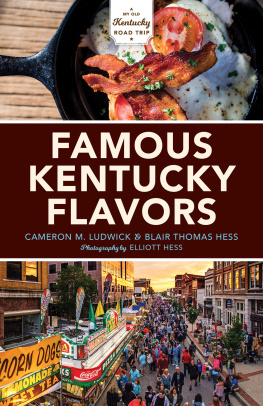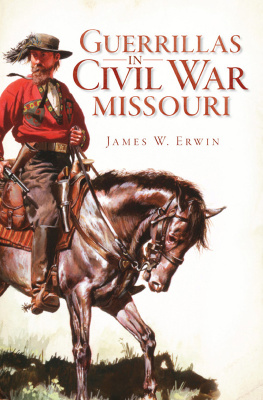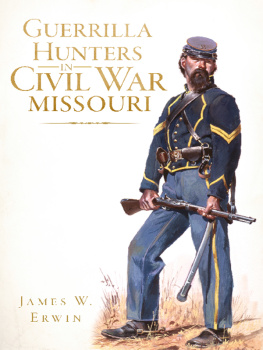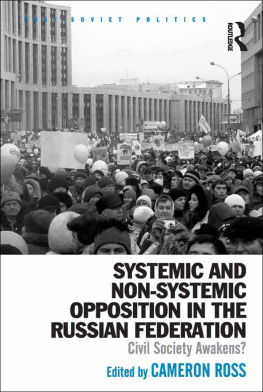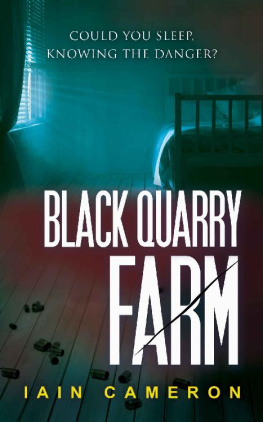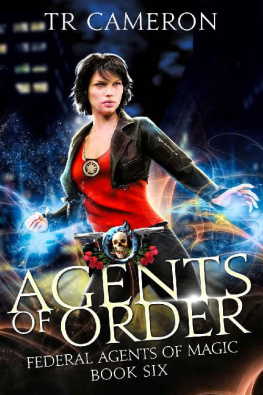PRESIDENTS, BATTLES, AND MUST-SEE CIVIL WAR DESTINATIONS
EXPLORING A KENTUCKY DIVIDED
CAMERON M. LUDWICK
&
BLAIR THOMAS HESS
Photography by ELLIOTT HESS
INDIANA UNIVERSITY PRESS
This book is a publication of
Indiana University Press
Office of Scholarly Publishing
Herman B Wells Library 350
1320 East 10th Street
Bloomington, Indiana 47405 USA
iupress.indiana.edu
2019 by Cameron M. Ludwick and Blair Thomas Hess
All rights reserved
No part of this book may be reproduced or utilized in any form or by any means, electronic or mechanical, including photocopying and recording, or by any information storage and retrieval system, without permission in writing from the publisher.
The paper used in this publication meets the minimum requirements of the American National Standard for Information SciencesPermanence of Paper for Printed Library Materials, ANSI Z39.48-1992.
Manufactured in the United States of America
Cataloging information is available from the Library of Congress.
ISBN 978-0-253-03897-5 (hardback)
ISBN 978-0-253-03896-8 (paperback)
ISBN 978-0-253-03900-2 (ebook)
1 2 3 4 524 23 22 21 20 19
All photos by Elliott Hess unless otherwise noted,
www.elliotthess.com.
For those who dont shy away from history and those who follow the wisdom of Abraham Lincoln and must have Kentucky.
Acknowledgments
It started with unusual monuments.
When one of us was living in Nashville and the other lived in Lexington, we would try to meet in the middle as often as we could spare the weekend. Our first trip to Mammoth Cave took one of us past the neoclassical, kind of Parthenon-esque Lincolns Birthplace National Park, and the other past the 351-foot only-thing-in-the-skyline Jefferson Davis Monument. Both monuments wound up on the itinerary pretty quickly, and when theshall we saygeekier of us took the team to their first reenactment in Perryville, we knew we had to dive into Kentuckys Civil War history.
This book would not be what it is without our intrepid photographer, Elliott Hess. While he wasnt quite fast enough to snag that shot of a young soldier resting against a tree with his rifle in one hand and his cell phone in the other, he did capture the gorgeous photos youre treated to here. From portraits to landscapes and the heat of battle, Elliotts photos are worth more than a thousand words and far more than the thanks we offer him here.
To our editor, Ashley Runyon, and the team at Indiana University Pressour eternal thanks for your patience, understanding, and support while we performed our own reenactment of all the things authors probably shouldnt do. Thank you for helping us take My Old Kentucky Road Trip off the parkways and onto the page.
To Alice at Speilburg Literary Agency, words will never be enough to convey our gratitude for your steady guidance, unfailing patience, faith, and, most of all, friendship. Were so glad to have you along for the ride.
We cant say this loudly enough or often enough: thank you to the state employees, park rangers, groundskeepers, and hospitality managers who make every historic site, monument, resort park, tour, museum, and everything around and between such wonderful tributes to Kentuckyher history and her future. And to the historical societies, community groups, genealogists, librarians, researchers, and our fellow writersmay we never stop seeking and never stop sharing the Commonwealths important stories.
A twenty-one-gun salute to the reenactors who pour their (fake) blood, (very real) sweat, and (maybe sometimes) tears into recreating the battles that shaped our past and continue to shape our present, and for sharing their knowledge and experiences with inquisitive roadtrippers. We raise our canteens to your thorough dedication and unbridled passion.
While we cant confirm that Abraham Lincoln was thinking of the Kentucky State Seal when he proclaimed, A house divided against itself cannot stand, in his debate against Stephen Douglas in 1858, we know that without our Kentucky home, this great road trip would have never made it out of the garage. To our families keeping the fires going at our original base camp, thank you. We love you.
Lastly, an apology to the littlest roadtripper on the team: were sorry we made you wear those giant noise-canceling headphones while the guns and canons exploded at the reenactments. We promiseit was for your health and safety and not our own laughs (mostly).
PRESIDENTS, BATTLES, AND MUST-SEE CIVIL WAR DESTINATIONSIntroduction
My Old Kentucky Road Trip is an ode to our home state. Its a labor of love and a journey to connect with all its parts and all its historythe good and the difficult.
If you havent already guessedits not obvious at allthe name of our website and our books is inspired by Stephen Collins Fosters My Old Kentucky Home, another ode to the Commonwealth. When Foster visited his family at Federal Hill in Bardstown, Kentucky, in the mid-1800s, he was struck not only by the lush, rolling green hills, the meadow in the bloom, and the birds making music all the day but also by the people. All its people.
Most Kentuckians are probably familiar with the controversy surrounding the original lyrics to My Old Kentucky Home, but few recognize its history as an antislavery ballad. Fosters original lyrics were inspired by Harriet Beecher Stowes recently published abolitionist novel, Uncle Toms Cabin. Stowe, by the way, based her main character on Josiah Henson, who was owned by the Riley family in Daviess County, Kentucky.
The full original text of My Old Kentucky Home, though it uses what we recognize today as insensitive and demeaning language, tells the story of a slave who has been sold to the deeper South, where he laments, The head must bow and the back will have to bend In the field where the sugar-canes grow. Fosters songwhich quickly became a hit when it was released in 1853brought attention to the abolitionist movement. Frederick Douglass even promoted the tune.
The song was taken up by soldiers and their families on both sides of the Civil War. According to My Old Kentucky Home State Park, soldiers would visit Federal Hill during the war and after, in homage to the songs sentimental longing for a home far away. Tourists continued to visit My Old Kentucky Home at Federal Hill, and roughly 150 years later, two Kentucky ladies on a road trip visited too.
It can be easy to brush over the difficult parts of history or to pretend they never happened. Our country still struggles with the consequences and legacy of the Civil War. For our small part as citizens of the Commonwealth, this is our Old Kentucky Home, and the best way we know to discover our history and what has brought us to the Kentucky of today is to take a road trip.










